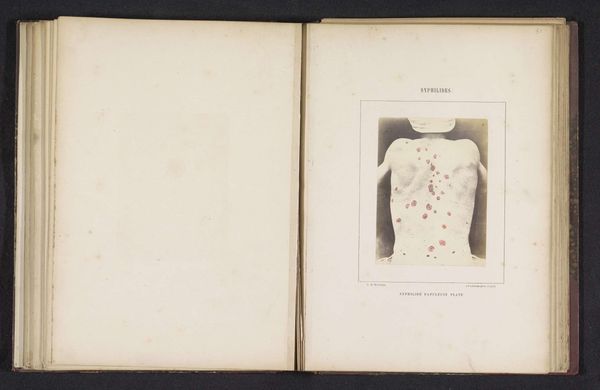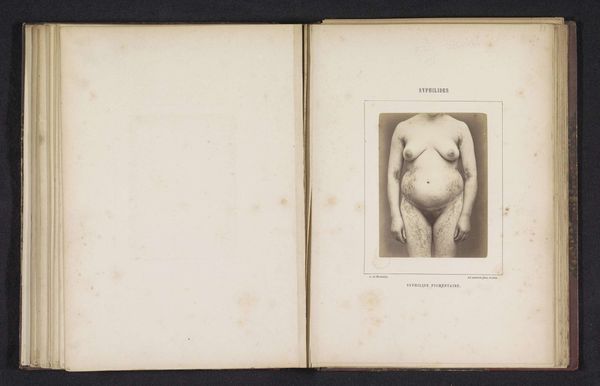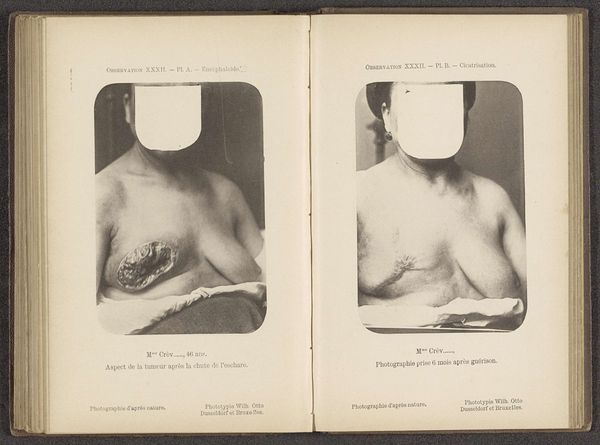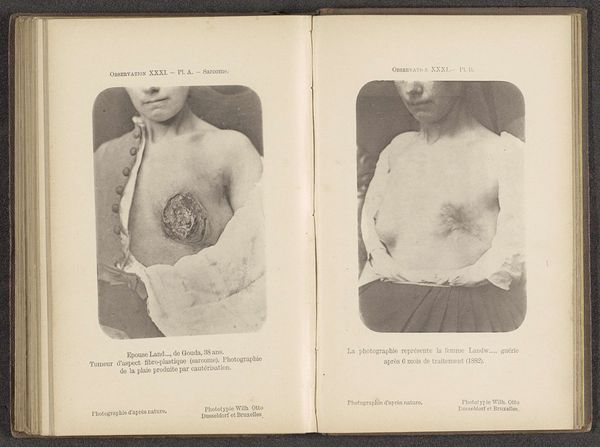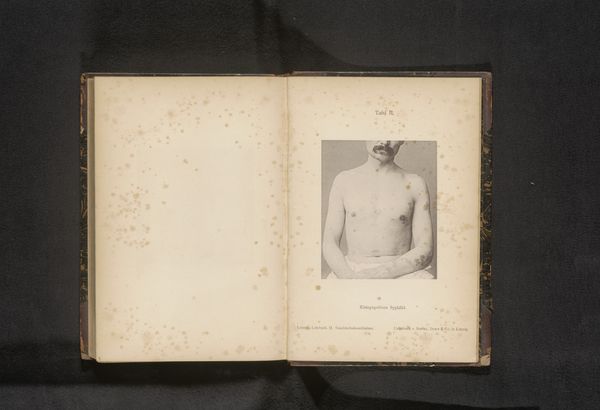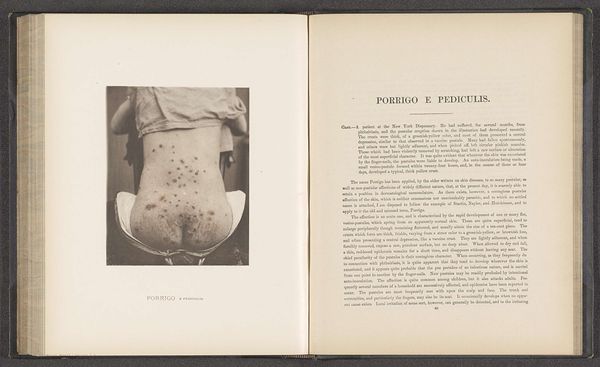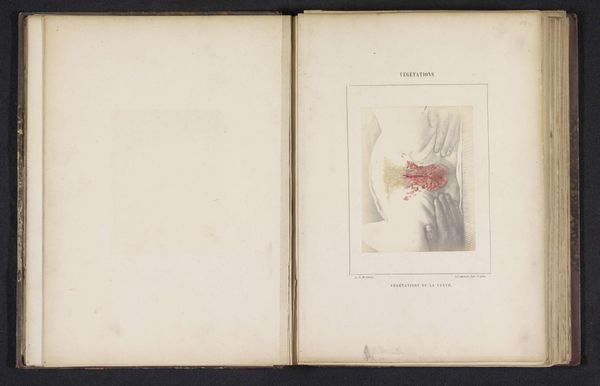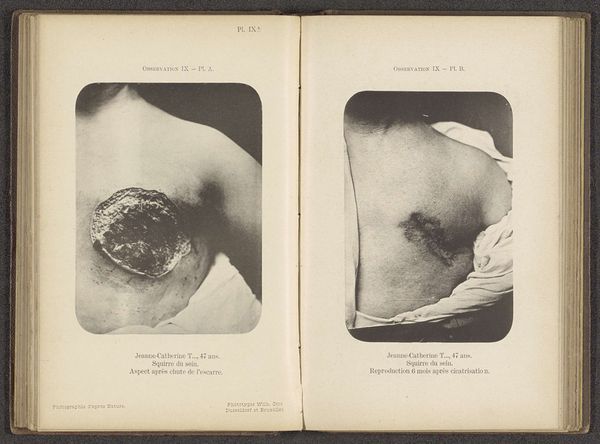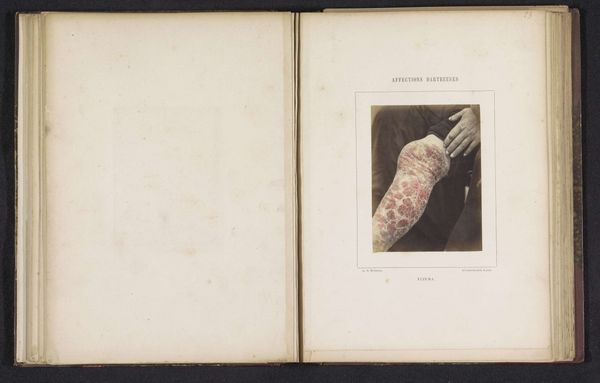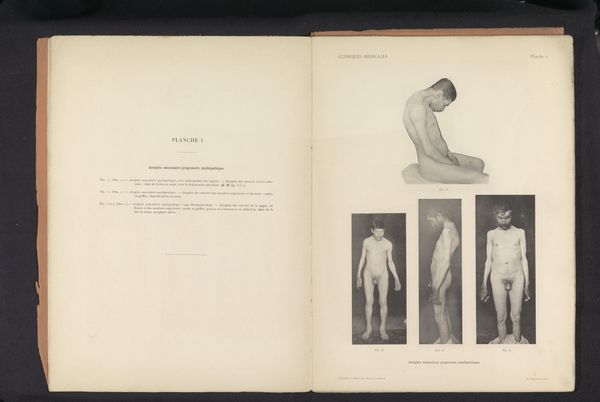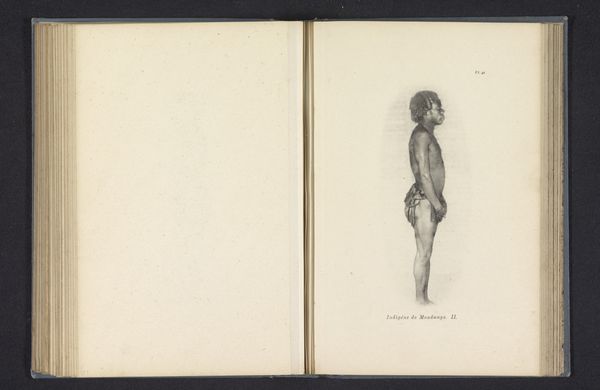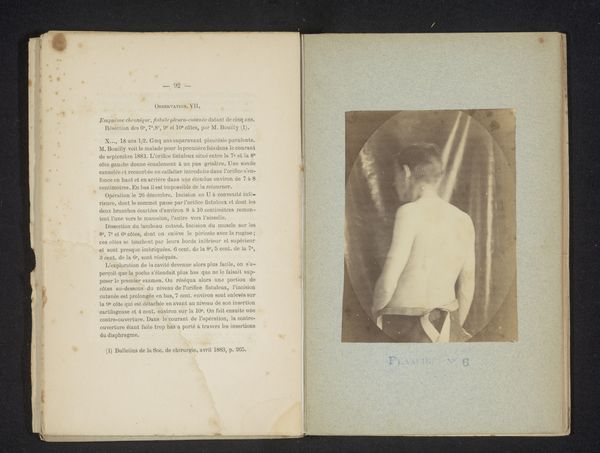
photography, gelatin-silver-print
#
portrait
#
photography
#
gelatin-silver-print
#
academic-art
#
nude
#
realism
Dimensions: height 116 mm, width 86 mm
Copyright: Rijks Museum: Open Domain
This photograph by A. de Montméja captures a man afflicted with pityriasis versicolor, a skin condition, and invites contemplation on the symbolism of the skin itself. Historically, the skin has been a canvas for both beauty and disease, a boundary between the self and the world. Consider the flayed skin in Renaissance art, representing transformation. Here, the skin marked by pityriasis becomes a map of affliction, a visible sign of inner turmoil or imbalance. Across cultures, skin ailments often carry symbolic weight, from biblical leprosy signifying moral corruption to tribal scarification denoting identity and status. The patterns on this man’s torso echo ancient motifs – the spotted or speckled surface reminiscent of celestial maps or constellations, suggesting a connection between the individual and the cosmos. The image evokes a visceral reaction, tapping into our collective anxieties about mortality and bodily integrity. It serves as a potent reminder of the fragility of human existence.
Comments
No comments
Be the first to comment and join the conversation on the ultimate creative platform.
